Charles Darwin envisioned life on Earth as developing over long periods of time through natural selection. In The Origin of Species, Darwin varyingly restated his vision, for example –
“I do believe that natural selection will generally act very slowly, only at long intervals of time.”
Time is the fourth of natural selection’s five principles, developed by Niles Eldredge (pictured right below) at the American Museum of Natural History. He encapsulated these five principles in the acronym V.I.S.T.A.
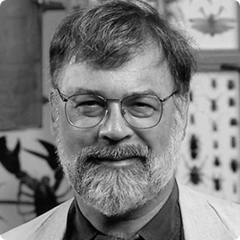 V.I.S.T.A. signifies variation, inheritance, selection, time, and adaptation. Understanding the principle of time is essential when studying the foundations of evolution.
V.I.S.T.A. signifies variation, inheritance, selection, time, and adaptation. Understanding the principle of time is essential when studying the foundations of evolution.
Estimates of Earth’s “long intervals of time” since the nineteenth century have increased exponentially. At the time, popular estimates were several hundred million years. Now, estimates are over 4 billion years, reflecting Darwin’s limitless time concept –
“We may continue the process by similar steps for any length of time.”
Definitions and measurements are essential to scientifically validate any natural phenomenon, including time. However, modern developments of time concepts are proving to be infinitely more dynamic and complex than envisioned in the nineteenth century.
Overview
 The concept of time has intrigued philosophers, scientists, and thinkers throughout the ages. Astronomy and physics offer approaches and methods to understand time.
The concept of time has intrigued philosophers, scientists, and thinkers throughout the ages. Astronomy and physics offer approaches and methods to understand time.
In this article, we will review the past and modern challenges to understanding the physics and principles of time. More relevant to evolution, a sequel article will examine the timing and synchronization of Earth’s biosphere and geosphere.
Physics is founded on repeatable, measurable observations. However, principles can be based on human perceptions. In evolution studies because of the nature of time, physics and principles of time is often synchronized to align with Darwin’s theory.
An essential hallmark of a scientific principle is validation through falsification testing. This article explores the current understanding of the physics and principles of time. A sequel article will examine falsification testing.
Time Measuring Approaches
 In the broadest sense, time is a continuous progression of existence from the past to the future. Mechanical devices, like hour glasses, sundials, and clocks, measure the observed progression of present time, while calendars graphically plot time intervals – past, present, and future.
In the broadest sense, time is a continuous progression of existence from the past to the future. Mechanical devices, like hour glasses, sundials, and clocks, measure the observed progression of present time, while calendars graphically plot time intervals – past, present, and future.
The standard time units are days, months, and years based on astronomical observations. Days correspond to Earth’s axis rotation, months typically correspond to the Moon’s orbit around the Earth, and a year corresponds to Earth’s orbit around the Sun. A day is a prime unit of time – but only on Earth.
In the pursuit of discovering a universal prime unit of time, modern physicists introduced time as a distinct dimension. Albert Einstein formulated mathematical and quantum mechanics models to test and decipher the physical dimensions of time throughout the universe.
Understanding the potential and limitations of different time-measuring approaches is vital when investigating time-dependent processes, specifically, evolution.
Astronomical Time Measurements
Days
Time-measuring concepts predated the Sumerian, Egyptian, and Babylonian astronomical observations in the second century BC. Moses explained the day concept in Genesis, writing –
“So the evening and the morning were the first day.”
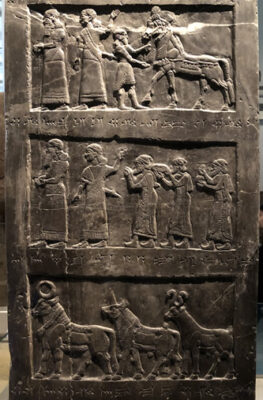 Likely, sources of information had long been woven into the culture, with historical documents widely available. First-century historian Flavius Josephus noted that Methuselah had recorded these events on stone obelisks (pictured left).
Likely, sources of information had long been woven into the culture, with historical documents widely available. First-century historian Flavius Josephus noted that Methuselah had recorded these events on stone obelisks (pictured left).
The Egyptians introduced the 24-hour day concept to correspond to a 12-star constellation observed in the night sky (pictured right). If twelve were observed at night, twelve was applied to balance the day, totaling 24 hours.
observed in the night sky (pictured right). If twelve were observed at night, twelve was applied to balance the day, totaling 24 hours.
The Greeks applied the term “hour” to these divisions of the day to signify each as a season – a natural proportion of time. The Sumerians advanced the division of each by 60, a practice popularized by the Babylonians.
A base 60-number system is mathematically more divisible by whole numbers than other base systems. Each hour is divisible by 60 for minutes, and each minute by 60 again for seconds. Measurements of a base-60 system more easily translate into degrees of a circle.
Time measured by Earth’s rotation is known as Universal Time. Even though the speed of Earth’s rotation varies, the duration of a day remains a prime measure of time.
Astronomers and physicists recently discovered that the Earth’s rotation is slowing. When the rotation speed began slowing is under investigation – puzzling astrophysicists.
Months and Years
 Civilizations throughout history schematized days into calendars based on astronomical observations. Typically, successive days are grouped into units of time known as weeks, months, and years.
Civilizations throughout history schematized days into calendars based on astronomical observations. Typically, successive days are grouped into units of time known as weeks, months, and years.
The month is based on the Moon’s orbit around the Earth, approximately 29.5 days. Years are measured by the Earth’s orbit around the Sun, approximately 365.2 days. Notably, a day is not a prime number for either months or years.
A universal prime measurement of time beyond a day has long proved elusive. Stonehenge, built in the third century BC, points to prehistoric time-reckoning. The Roman calendar (pictured left) underwent a succession of changes between its founding and the fall of the Roman Empire.
All calendars require ongoing readjustments, defying assumptions that unifying astronomical laws drive the physics of time. A universal measurement of time seems beyond astronomical observations.
Cultural Time Measurements, The Week
In contrast to days, months, and years, a week is a biblical time concept independent of any observed natural phenomenon. The Genesis concept of the Sabbath (Shabbat) is an infinite sequence of seven days.
 Noah applied the seven-day concept in the Great Flood narrative. As the floodwaters receded, Noah sent a raven, followed by doves, at seven-day intervals from the Ark (pictured right). However, the week concept is unrelated to any measurable natural phenomenon and, as such, does not play a role in defining time scientifically.
Noah applied the seven-day concept in the Great Flood narrative. As the floodwaters receded, Noah sent a raven, followed by doves, at seven-day intervals from the Ark (pictured right). However, the week concept is unrelated to any measurable natural phenomenon and, as such, does not play a role in defining time scientifically.
The known limitations of measuring time accurately launched the search for more precise methods early in the twentieth century.
Atomic Time Measurements
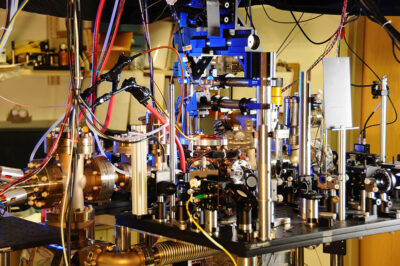 Atomic clocks are one of the most accurate time-measuring devices ever developed. Quartz clocks were a forerunner of atomic clocks. Natural oscillations of electrons drive atomic clocks.
Atomic clocks are one of the most accurate time-measuring devices ever developed. Quartz clocks were a forerunner of atomic clocks. Natural oscillations of electrons drive atomic clocks.
The precision and stability of these oscillations give atomic clocks a level of accuracy second only to nuclear clocks. The most common atomic clocks are cesium, hydrogen, and rubidium clocks.
Cesium is the most accurate atomic clock and is the basis for the International System of Units definition of a second. Atomic clocks are precise, with an unparalleled error rate.
However, is time more than a rate? At the turn of the century, physicists continued their scientific search to discover the natural laws of time.
Physics of Time
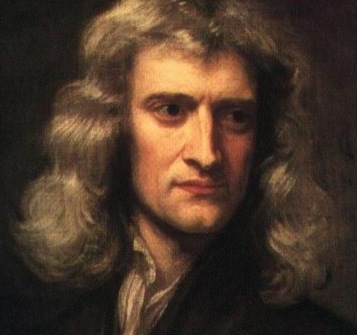 As Isaac Newton (pictured left) discovered the laws of motion in the seventh century, physicists continued their search to unravel the mysteries of time. By 1916, Einstein proposed a mathematical approach by incorporating a concept developed earlier by Hermann Minkowski. Minkowski coined his concept spacetime.
As Isaac Newton (pictured left) discovered the laws of motion in the seventh century, physicists continued their search to unravel the mysteries of time. By 1916, Einstein proposed a mathematical approach by incorporating a concept developed earlier by Hermann Minkowski. Minkowski coined his concept spacetime.
Space is three-dimensional, defined as width, height, and length. Spacetime incorporates time as a fourth dimension. Einstein defined spacetime as a four-dimensional continuum based on two physical principles: mass and energy.
Einstein’s mathematical model integrated the concept of time dilation and contraction with energy (E) and mass (m) – E=mc2. Time dilation sees time traveling at different rates through different frames of reference, with length contracting in the direction of motion.
 Spacetime (pictured right) led to introducing two interrelated theories, Special Relativity and General Relativity. Together, these opened the field of quantum mechanics and exploration of the subatomic realm.
Spacetime (pictured right) led to introducing two interrelated theories, Special Relativity and General Relativity. Together, these opened the field of quantum mechanics and exploration of the subatomic realm.
Although these concepts opened the Atomic Age, the nature of time remains a mystery. In 1955, Einstein, writing about the passing of his colleague Michele Besso, noted –
“The distinction between past, present, and future is only a persistent illusion.”
Theoretical physicist Carlo Rovelli, one of the world’s top 50 thinkers, in The Order of Time, notes the transition of our current understanding –
“The past is fixed, the future open … and yet all of this has turned out to be false.”
Time was once viewed as marching steadily forward, linear and absolute. However, time beyond the present is now understood to flexibly synchronize to the stretching and contracting dimensions of its space—spacetime.
Defining Time
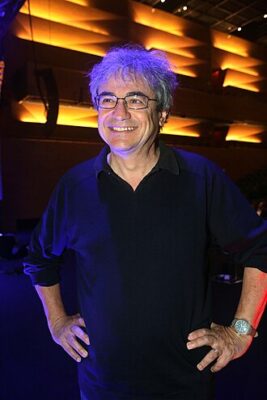 Understanding of time as a non-linear and non-absolute natural phenomenon, past and future measurements of time are mere human constructs. As Rovelli (pictured left) notes –
Understanding of time as a non-linear and non-absolute natural phenomenon, past and future measurements of time are mere human constructs. As Rovelli (pictured left) notes –
“The growth of our knowledge has led to a slow disintegration of our notion of time.”
Twenty-first-century physicists remain challenged to define the nature of time scientifically. Scientists test presumptions, including “notions of time.” ScienceDaily’s perspective on time –
“Scientists challenge the long-held presumption that time evolution — the incessant unfolding of the universe over time — is an elemental part of Nature.”
The scientific principles of time remain a central, unresolved mystery of the universe. Therefore, perspectives on the intersection of time and evolution are increasingly recognized as mere human interpretations –
“Time’s apparent flow is the human interpretation of sequences of causally related events.”
Genesis
Time is the opening topic in the Genesis account – “In the beginning.” In The Origin of Species, Darwin comments on Moses’ account –
“On the ordinary view of the independent creation of each being, we can only say that so it is… but this is not a scientific explanation.”
 Paradoxically, neither is Darwin’s explanation of natural selection scientific. “Science without religion is lame,” Einstein (pictured right) concluded after finding –
Paradoxically, neither is Darwin’s explanation of natural selection scientific. “Science without religion is lame,” Einstein (pictured right) concluded after finding –
“No one can read the Gospels without feeling the actual presence of Jesus. His personality pulsates in every word.”
To scientifically understand evolution, the pending sequel article will explore whether Earth’s geology and biology collectively are synchronized with time.
Time, Fourth Principle of Natural Selection is a Theory and Consensus article.
More
Natural selection’s five principles, abbreviated as V.I.S.T.A., include –
-
- Variation, First Evolution Principle
- Inheritance, Second Evolution Principle
- Selection, Third Principle of Evolution
- Time
- Adaptation, Fifth Principle of Natural Selection – under construction
Darwin Then and Now is an educational resource on the intersection of evolution and science, highlighting the ongoing challenges to the theory of evolution.
Move On
Explore how to understand twenty-first-century concepts of evolution further using the following links –
-
- The Understanding Evolution category showcases how varying historical study approaches to evolution have led to varying conclusions. Subcategories include –
- Studying Evolution explains how key evolution terms and concepts have changed since the 1958 publication of The Origin of Species.
- What is Science explains Charles Darwin’s approach to science and how modern science approaches can be applied for different investigative purposes.
- Evolution and Science feature study articles on how scientific evidence influences the current understanding of evolution.
- Theory and Consensus feature articles on the historical timelines of the theory and Natural Selection.
- The Biography of Charles Darwin category showcases relevant aspects of his life.
- The Glossary defines terms used in studying the theory of biological evolution.
- The Understanding Evolution category showcases how varying historical study approaches to evolution have led to varying conclusions. Subcategories include –



